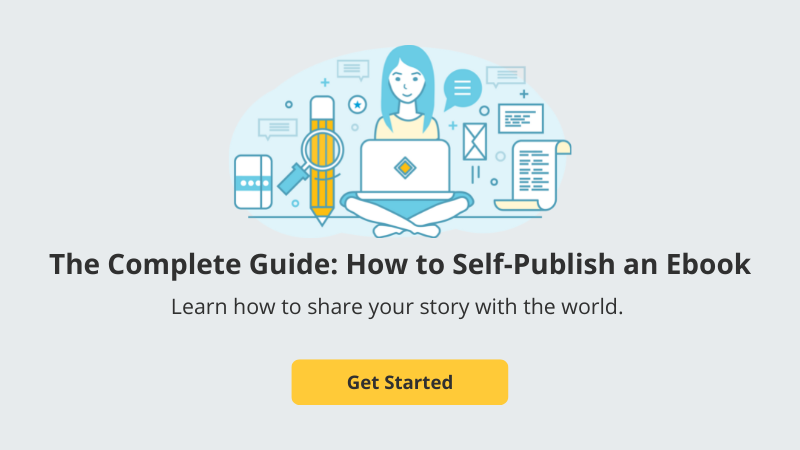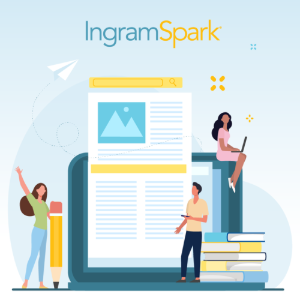When considering converting your book into an ebook, there are multiple benefits. Readers get instant access to ebooks, and distributors don’t have to bother with supply chain delays. The most rewarding advantage is that authors can receive higher compensation. Knowing the different ways in which your ebook can be sold is crucial to understanding how this compensation is achieved.
We offer three main sales models to maximize your ebook distribution and profits: Retail, Library, and Institutional. Here, we'll dive into the methods and advantages of each model and discover how to increase your ebook’s readership and earnings.
Retail Model
Retail is where the general public buys books, whether that's in a brick-and-mortar store or online. The retail world for ebooks is vast and includes a number of different booksellers. The most common ones you have probably heard of are Amazon/Kindle, Nook, and Apple. However, we work with several other distributors, in addition to those, and your book would be sold through all of them.
So what’s the retail benefit of selling an ebook instead of only a print version? In a word, accessibility. Now more than ever, success for any product hinges on how easy it is to access, and for many people, that means digital.
In order for your book to reach the widest audience, ebook availability in retail is essential.
Through the various online distributors, your ebook can be sold by three main methods: one book - one sale, unlimited subscription, and shared pool subscription.
- The one book - one sale is the most straightforward with the reader, or end user, purchasing and downloading your ebook and keeping it to be accessed anytime they wish on their device, just as if they bought a physical book from the bookstore.
- An unlimited subscription is where the end-user pays a flat, monthly fee to access ebooks at any time until the subscription ends. Think of this one like your Netflix or Hulu subscription; you have access to watch the shows while your subscription is active. With this method, a sale is generated every time an end user reads or consumes the threshold amount of your ebook. So, a sale is made once a reader gets through 20% of your ebook.
- With a shared pool subscription, the reader still pays a flat, monthly subscription, but the compensation method is different. Instead of an individual sale being generated each time your ebook is read, the revenue from all the subscribers is pooled and shared.
Library Model
While the Retail Model is what most people think of first when trying to sell an ebook, the Library Model should not be overlooked in terms of value. Just as booksellers have moved to increase the titles available digitally, so public libraries across the country have also made numerous ebooks available online.
Selling your ebook to libraries not only earns you revenue but also allows people who may not have the funds to buy books or subscriptions to read your work.
Within the Library Model, there are three methods readers can use to access your ebook: single user, three users, and pay-per-use.
- The single-user method means one end user at a time can access your ebook for a set duration. This is similar to one person being able to check out your physical book at the library and no one else having access until the book is returned.
- The three-user method works the same way, but three people at a time can access your ebook for a set duration. Again, think of it like the library having three physical copies of your book and those three being checked out at any time. Both the single-user and three-user methods allow a library to purchase a perpetual license to your ebook.
- Pay-per-use offers the widest access. Essentially, this means the library has an unlimited number of copies of your ebook, which multiple readers can check out at any time. The revenue from this method is shared between the publisher and reseller. While pay-per-use can reach more than three readers at a time, the library purchases a limited license for your ebook.
Institutional Model
The Institutional Model grants access to the libraries of colleges, universities, and other research and academic institutions. This model focuses on reaching students, professors, and researchers, and it’s a great way for your ebook to attain a different level of readership.
Whether your ebook is a textbook or a novel, having it available in institutional libraries means your work is that much easier to reference in academic papers and journals, or issued by a professor as required reading for a class.
The three methods for this model are three-user, short-term loan, and non-linear lending.
- The three-user method works the same way as for the public libraries with three users having access to your ebook at a time, and the institution purchasing a perpetual license to your title.
- Short-term loans are when an end user is given access to your ebook only for 24 hours, but an unlimited number of users can access your work at any time. Each time an end user accesses your ebook, a sale is generated.
- Non-linear lending works a little differently. The institutional library purchases 325 “uses” of your ebook for the period of one year. Every time an end user reads, copies, or prints a certain number of pages of your ebook it is considered a “use.” Once your ebook has been “used” 325 times, it's no longer accessible until the next licensed year. If the institution wants continued access after the 325th “use” within the same one-year period, it may purchase an additional license. Both short-term and non-linear loans allow institutions to purchase a limited license for your ebook.
One final note about the advantages of libraries and institutions. Due to recent censorship and book bans, at least one library is offering digital access to students from anywhere in the country. While different states and cities wrestle with what titles to keep in their libraries, other libraries might also start to offer patronage to people outside of their cities. Whether or not you consider your book controversial, if libraries expand their digital access beyond their city, that’s just one more way your readership can grow by selling your ebook to libraries.












